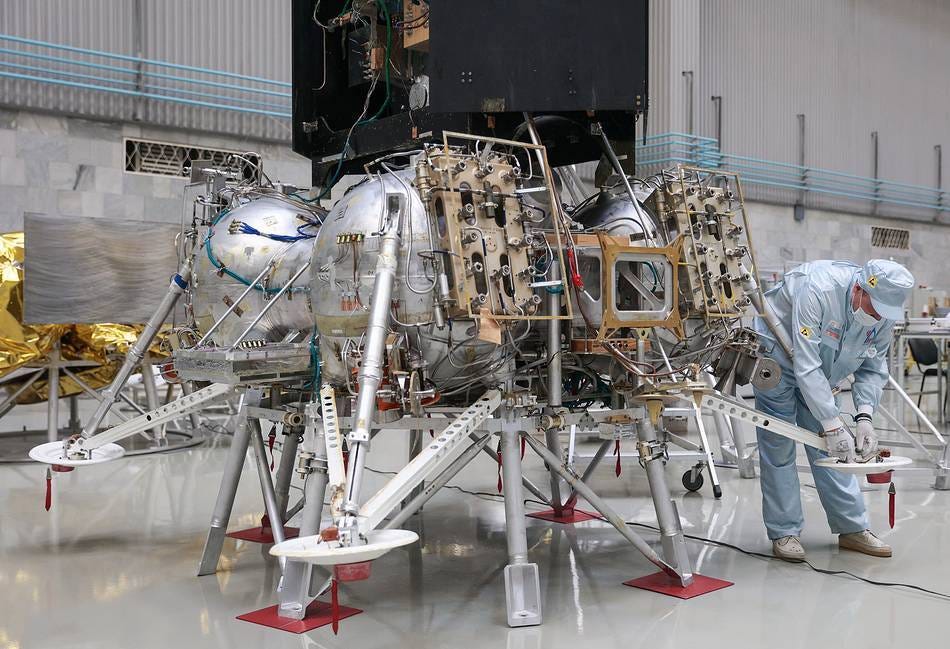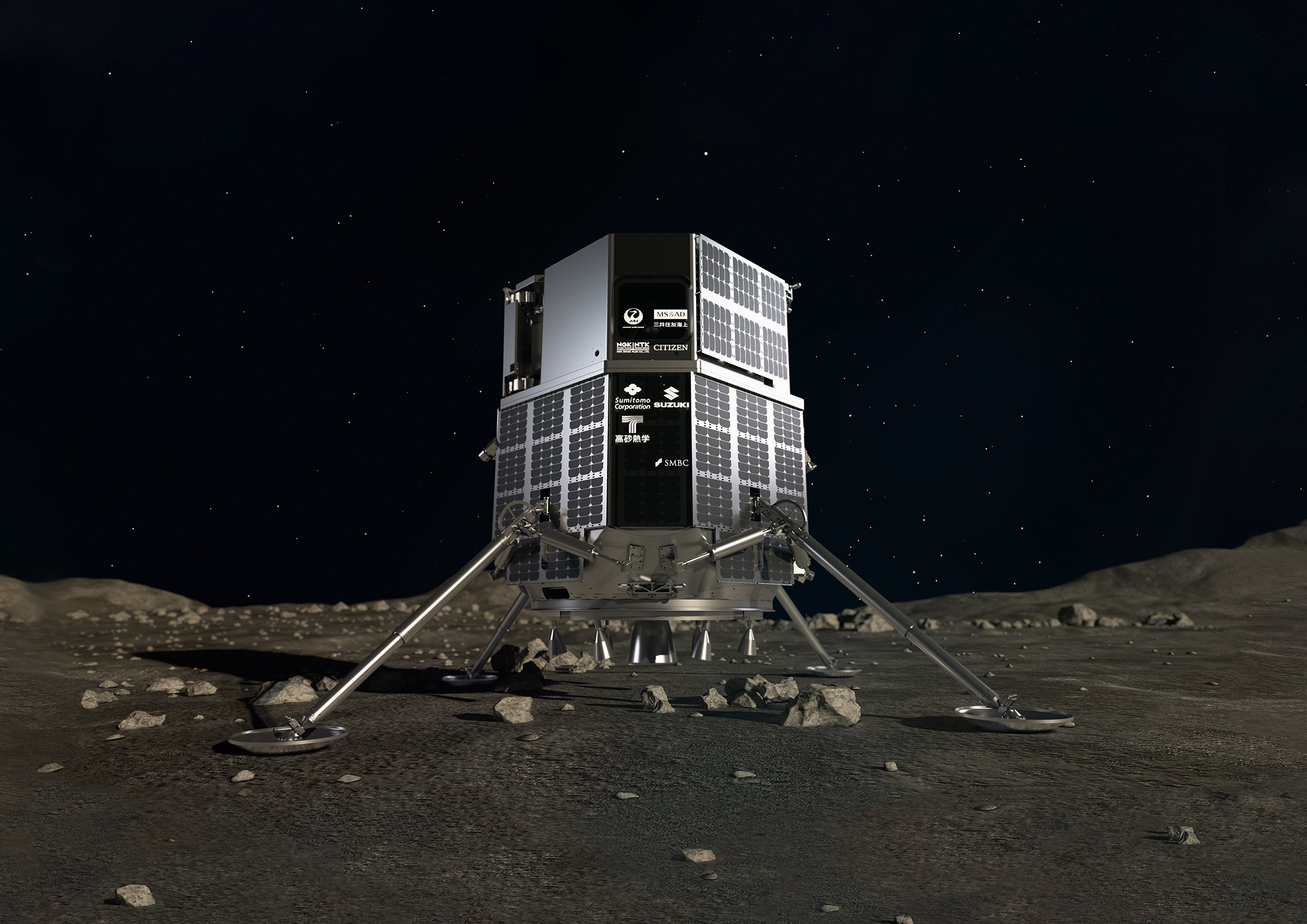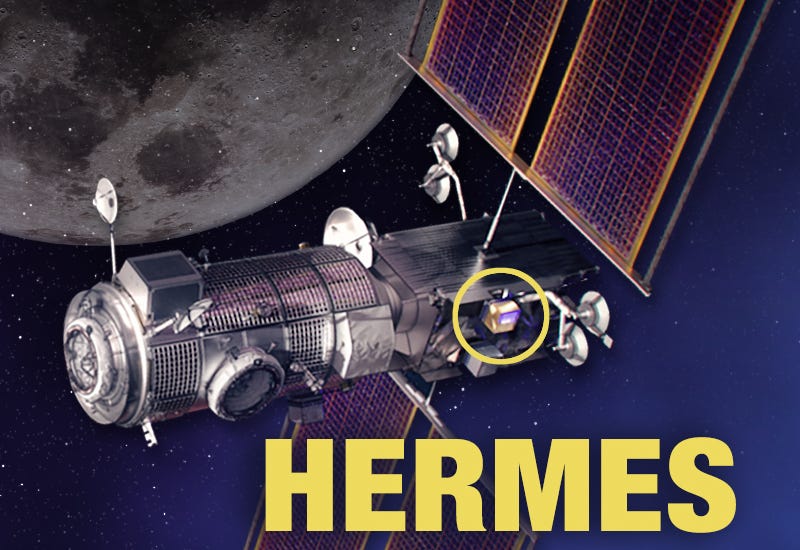Moon Monday Issue #62
Russia's Luna-25 Moon landing mission targeting July launch; Israel signs the Artemis Accords; the armada of radiation measuring instruments to be on the Gateway lunar station, and more lunar updates.
Highlight
The Russian space agency Roscomos has shared that their Luna 25 Moon landing mission is on track for a July launch on a Soyuz 2 rocket. All of its scientific instruments have been installed, and engineers are currently progressing with ground tests on the spacecraft, aiming to complete them in March. Onboard software tests will follow, and should be completed in April. According to NPO Lavochkin, the veteran Russian space company who built the spacecraft, the current target launch date is July 23.

We know from past presentations that Luna 25 will have nine instruments, including an arm to sample material from 20 to 30 centimeters below the surface and feed it to a laser spectrometer to determine elements and isotopes within. There’s also an ESA camera onboard to image the landing, and a neutron and gamma ray spectrometer to identify the composition of the subsurface. The mission’s landing site, while not truly polar due to engineering constraints, is selected at about 70° South such that underground water ice can still be detected.
Exploration
NASA has successfully completed another test of its fully stacked SLS rocket in preparation for launching the Artemis I mission to send an uncrewed Orion spacecraft around the Moon and back. The January 24 simulated launch countdown test demonstrated the working of the ground launch software and its sequencer, specifically how the rocket responds to the countdown and if the system correctly transfers the control of the rocket to the final sequencer, which kicks in 30 seconds before launch. Few more tests remain before rolling out the rocket to the launchpad to test fueling, defueling and related procedures in late February, depending on the success of which NASA will set the target launch date in late March or April.
ispace Japan has provided an update on their first two Moon landing missions, M1 and M2. The M1 lander’s assembly in Europe will be completed by May 2022, after which the lander will be tested and then shipped to the U.S. for a Q4 2022 launch on a SpaceX Falcon 9 rocket. Payloads on the M1 mission include UAE’s Rashid rover, a solid-state battery tech demo, a transformable lunar robot by the Japanese space agency, multiple Canadian payloads and services, and more.

The launch of ispace’s second mission, M2, has slipped from 2023 to 2024. M2 will be the first time ispace’s indigenously built microrover will explore the Moon’s surface. ispace’s European arm is developing the rover, aided by funding from the Luxembourg Space Agency via an ESA contract.
Israel has joined the U.S.-led Artemis Accords, joining 14 other signee nations who have a consensus on best practices to follow when exploring the Moon and deep space in the coming decades.
Science
NASA’s HERMES instrument suite, which will be mounted outside the upcoming NASA-led crewed Gateway station orbiting the Moon, passed its preliminary design test on January 27. The team will now move on to the final design. After Gateway becomes operational in 2025, HERMES will monitor the fluctuating space environment in its orbit for years, chiefly focusing on the continuous stream of radiation particles coming from the Sun called the solar wind and its effects. This will make HERMES the latest addition to NASA’s fleet of space weather observatories. HERMES will also take radiation and magnetic field measurements when the Moon passes through the tail of Earth’s magnetic field. This will allow NASA to combine its observations with two nearby THEMIS spacecraft having similar instruments, and thus reconstruct changes in the solar wind with time.

That said, HERMES will mostly measure lower energy radiation, something not concerning enough for astronaut safety on future Moon missions. That purpose will be served by ESA’s instrument suite ERSA, also to be mounted on the Gateway. ERSA will measure higher energy particles in the solar wind as well as galactic cosmic rays. HERMES and ERSA will be the first space weather monitoring platforms on a crewed spacecraft to venture outside Earth’s protective magnetic field.
ESA, in collaboration with JAXA, is also adding a suite of dosimeters inside the Gateway’s habitat module HALO to monitor solar and cosmic radiation from within the station, which will help assess requirements for astronaut safety. Together, these instruments will provide a fuller picture of the space weather conditions near the Moon, and allow us to formulate better radiation shielding requirements for hardware we build and people we send on future deep space missions.
Related: Two new results on long-term radiation measurements by the Chang’e 4 lander and rover on the Moon’s farside are out.
- First measurements of low-energy cosmic rays on the surface of the lunar farside from Chang’E-4 mission
- Energetic Neutral Atom Distribution on the Lunar Surface and Its Relationship with Solar Wind Conditions
More Moon
If you’d like to introduce our Moon’s unique scientific and exploratory importance to your friends and family, I may have just the right webpage for you. Check out my curated Moon page for Earthlings from all backgrounds. I’ve also tried making the page useful to people already enthusiastic about lunar exploration by providing several external resources in context. I’d love to know what you think, especially if you have feedback or ideas to expand the scope of the resource page.
Thank you Epsilon3 and SWISSAPOLLO for supporting me and powering this edition of Moon Monday.
Everyone, I’m publishing this one-of-a-kind Moon exploration newsletter for free, with no ads. And it will stay that way. If you like my work, support me to keep it going.
